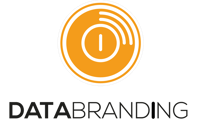
The more people know about the solutions that we offer with our product or service, the more we'll attract clients that we can help. Choosing the right strategy and mean isn't easy and depends on the goals of your company and the time in which you want to achieve them. Know the most important advertising strategies.
Advertising Goals
For a company or organization, the advertising goal has to do with the 3 following goals:
- Broadcast the message. The intention of this goal is to have your message broadcasted on the right channels in order to:
- Create brand awareness
- Have more people know what we do
- Attract the right person. You don't want to attract anyone, you want to attract the right person, that one that we can actually help with our solution. We want to create a bigger impact in a shorter period of time. There are 2 kinds of advertising that we can carry out, depending on the main 2 kinds of buyers. Depending on each kind of buyer, you should choose the right mean and strategy.
- Passive Buyers. Anyone who could at some point become our client but that doesn't have the problem that we can solve for now. When we make campaigns for this type of buyer, we aren't looking for immediate results, we just want them to get to know us and be present by means of constant exposure and repetition of our messages.
- Active Buyers. It's a person who knows has the problem or need that we can solve and is in need of solving it which is why, is actively looking for a solution. With this type of buyer, we want campaigns that offer immediate results. The means and campaigns should here be evaluated in terms of the short term success.
- Make people move/act on. Last, the goal is to have the person act on something, which can be to:
- Buy
- Try
- Subscribe
- Be interested and make a move on any other action we suggest him to
Having these 3 goals clear, which can together or separately, we then have to choose the mean in which the advertising campaigns will be carried out.
Means for Traffic Generation, Both Traditional and on the Web
Traditional means are the ones we are all familiar with (see n.10) yet, there are many other options that Digital Marketing offers these days and that few people know about or fully understand. We are starting with the latter.
Some of these channels are for active buyers, others are for passive buyers, some are for both.
1 SEO
SEO stands for Search Engine Optimization. This is a strategy that's used so that search engines (such as Google) find the content that we offer on our website and classify it accordingly.
When a person asks a question to the search engine, it'll recommend the site that offer an answer to that question. This is how we attract active buyers, that is, people who are actively looking for a solution to their problem and to whom a search engine offers ours as its search result.
This kind of technique requires not only to understand how people ask questions and have those keywords on our site, it also needs to be combined with a full content marketing strategy in order to be successful.
2 OFFSITE SEO
This kind of technique tries to get other sites link our content to theirs. This is a very delicate technique, since if it isn't carried out well, we might get penalized by Google.
Google recommends that this kind of links are offered organically. In other words, our content should be of such good quality, that other sites talk about it and recommend it, without us having to pay for it. It is somehow similar to Affiliation Marketing but it happens "naturally", without having to pay for it.
3 SEM
Search Engine Marketing or SEM pays search engines to offer our site on its search results whenever someone asks a question that matches the keywords that we've chosen. These keywords must be related to the solution that we offer.
For example, if we make shoes and someone is looking for "women sports shoes", the search engine will recommend our site among the most recommended answers that it offers to the user.
Both SEO and SEM are techniques that can be simultaneously used whenever we try to attract active buyers. They both have their own pros and cons.
SEO and SEM Pros and Cons
SEO takes longer to show results yet, it's result works effectively in the long term. If we manage to have a search engine offer our content in order to give an answer to the questions that users make, it'll keep us there for a long period of time and we won't be paying for it to recommend our site.
SEM offers faster results since we don't have to wait for search engines to find our content in order to show as a "best result". It's a great option if you want to get immediately recommended by search engines, plus, most only charge you for it when a user actually clicks on the link.
The disadvantage of SEM is that usually, the prices go on an auction: the more popular a keyword or question is, the more competitors you'll have, so its price is constantly increasing. Another disadvantage is that whenever a campaign is finished and we stop paying for it, we also stop being offered as the engine's result.
Only 3% of the people who ask a question on a search engine click on the SEM results (Ads). This is because the first intention of people who are surfing on the web is to get information and educate themselves about the possible solutions they have; buying comes second.
4 Display or Branding Campaigns
This is very similar to what happens with traditional media: you link your ads in other sites via banners, videos or buttons that would redirect them to your website. Usually, search engines charge for this exposure by the thousand (CPM) of by acquisition (CPA). CPA is when a conversion actually happens, a person actively interacts with our site by filling in a form, or downloading something, or actually buying.
YouTube is a great mean to run this kind of campaigns since it's the second most used search engine worldwide and it can offer videos with personalized variations of them, according to each user's profile.
This kind of mean is recommended for passive buyers, that is, the ones who aren't actively looking for a solution rather, they are just watching content that they are interested in. The ad is added to the content that they're watching, just like it happens with TV commercials.
The difference between these campaigns and traditional campaigns is that the message is here specifically offered according to the user's profile, which is built around the customer's history of likes and preferences that search engines keep.
5 Affiliation Marketing
It's when we use a network of sites and webpages in which we advertise our content. For example, a magazine may offer to advertise our product or service on their printed media, as well as on their digital version, website, and social networks. Usually, they are networks that belong to one company or that are affiliated with others in order to help you find the best destination possible for your ad, one that better matches offer / market.
With this strategy, you can pay for the results by CPC (cost per click), CPA (cost per acquisition) or CPL (cost per lead). In other words, you pay when someone is redirected to your page, or registers on it, or actually buys from you. The platform thus, makes money per action of per sales commission.
Each platform offers its own variation:
- If your intention is to do branding (for active clients), go CPC, CPA or CPL.
- If you are looking for display only, (passive clients), go for the CPM option.
6 Social Media Marketing
It's when we advertise our content on any platform that has users. It could be YouTube, social networks, podcasts or even our email contacts database.
7 E Public Relations (EPR)
E public relations is when we have opinion leaders (influencers) who have an audience that could be our market, advertise our content. You can ask bloggers and digital communicators to exchange content within your platform and theirs. You can also pay them so they talk and write about you.
8 Email marketing
It's when we advertise our content with our email contacts lists. If you have created a healthy database, you should be able to know who's interested in receiving more information about what you do or the problemas that you solve. You would also have their consent, since they shared their address with you. Beware! If you don't do this properly, you might be perceived as SPAM.
9 Mobile marketing
This is based on sending messages and content via mobile devices, such as:
- SMS (Text messages)
- Maps (Geolocation of products and shops on maps)
- Geolocation Offers (Businesses send offers that are close to a customer's geolocation)
- Augmented Reality (Customers can see virtual deals of nearby shops with their mobile's camera)
- Social Networks with Geolocation (Social Networks may activate messages according to the user's geolocation). For example, Facebook may tell us if any of our friends are close to where we are.
10 Traditional Media
We know them well and have used them for decades: press, TV and radio. Traditional media's downside is that we expose ourselves to them less and less every time and the cost to produce these ads is just as high as it was before, when they were the only option we had to advertise our company.
Yet, they are still a good option to attract passive clients. In the future, we'll combine or connect traditional and digital media. For example, we may add a QR code or a CTA button to our TV ad and, by doing so, we'd redirect our customers to a relevant page of our website.
Design Your Strategy
You now know the advertising strategies that you can carry out to watch your business grow. You may now design an advertising strategy that matches the results that you are expecting to see by:
- Keeping your specific goals in mind
- Knowing if you want to attract active or passive clients
- Choosing the right media

At DataBranding, we always recommend hiring the help of a professional or an agency for the design and running of your campaigns. By doing so, your learning curve will decrease and will make the most out of the resources that you invest on your campaigns.

